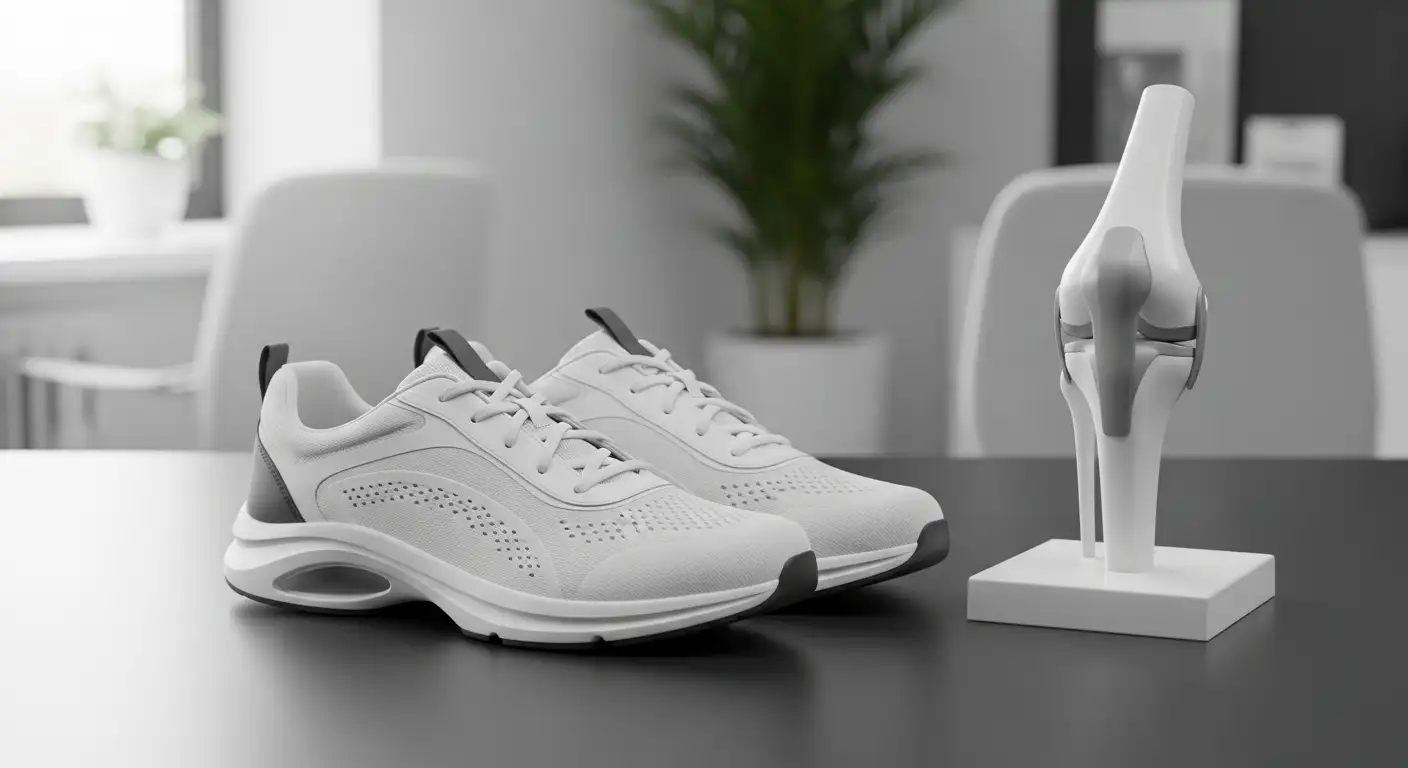
Understanding Knee Pain
Knee pain is a common issue that affects individuals of all ages. Recognizing the causes and symptoms is the first step towards effective management and treatment.
Causes of Knee Pain
Several factors can contribute to knee pain. A lack of strength or flexibility in the leg and glute muscles can lead to discomfort by placing additional stress on parts of the knee that are not designed to handle it. This results in instability when moving [1].
Prolonged periods of sitting can also lead to knee pain. When individuals remain inactive for too long, the muscles and tendons may stiffen, leading to discomfort and limited mobility. Regular movement and flexibility exercises are essential to prevent such knee discomfort [1].
Common Causes of Knee PainDescriptionMuscle WeaknessWeakness in leg muscles increases stress on the knee.Lack of FlexibilityPoor flexibility can lead to stiffness and pain.Sedentary LifestyleExtended inactivity can cause muscles and tendons to tighten.
Common Knee Pain Symptoms
Knee pain can manifest in various symptoms, ranging from mild discomfort to severe pain. It may affect daily activities and overall quality of life. Regularly performing exercises aimed at strengthening the muscles that support the knee can significantly alleviate pain. Knee discomfort is notably one of the most prevalent forms of chronic pain experienced by the general population.
Notable Symptoms of Knee PainDescriptionDiscomfort during movementPain may increase with activity or weight-bearing.Swelling or inflammationThe knee may appear swollen or feel tender to the touch.StiffnessLimited range of motion and difficulty bending the knee.
Understanding these causes and symptoms can guide individuals towards effective treatments and preventive strategies for knee pain. For more information on knee anatomy, check our article on lateral knee anatomy.
Knee Pain Prevention
Importance of Knee Strengthening
Strengthening the muscles surrounding the knee is crucial for maintaining knee health. Regularly engaging in exercises that target these muscles can significantly alleviate pain, as knee discomfort is one of the most common forms of chronic pain among people of all ages. Focusing on exercises that incorporate knee bends plays a vital role in fortifying the quadriceps and hamstrings. These muscles help reduce strain on the knee joint and improve shock absorption, ultimately supporting the knee during daily activities.
Muscle GroupImportanceQuadricepsProvides support and stability to the knee jointHamstringsHelps in knee flexion and provides balance to the quadricepsGluteus MaximusCounteracts knee valgus and prevents medial collapse
Properly strengthening the gluteus maximus is also vital for knee health. It works to prevent knee valgus, which is when the knee collapses inward. This muscle counters the movements associated with this condition, such as hip adduction and internal rotation. Incorporating glute-focused exercises into a routine yields substantial benefits.
Strategies for Preventing Knee Pain
To effectively prevent knee pain, individuals can adopt several strategies. Implementing a consistent exercise routine that focuses on knee bends and strengthening the surrounding muscles is essential. Here are some practical strategies:
By following these strategies and prioritizing muscle strengthening, individuals can significantly reduce their risk of developing knee pain. Focusing on knee-friendly exercises, particularly those involving knee bends, contributes to overall knee health. For those experiencing tightness, reviewing symptoms like my knee feels tight might be beneficial.
Exercises for Knee Health
Maintaining knee health is essential for overall mobility and activity. Strengthening the muscles around the knee, particularly the quadriceps and hamstrings, can significantly impact function and help in preventing knee pain. Here, we explore two important categories of exercises: quadriceps strengthening exercises and hamstring strengthening exercises.
Quadriceps Strengthening Exercises
The quadriceps are the primary muscles responsible for knee extension. Strengthening these muscles can help stabilize the knee joint and improve overall function. Below are effective exercises for enhancing quadriceps strength:
ExerciseDescriptionMini SquatsStand with feet shoulder-width apart, lower into a squat without exceeding 50-60° of knee flexion to minimize compressive forces.Quad SetsSit or lie down with the leg straight. Tighten the quadriceps muscle and hold for 5-10 seconds, then relax. Repeat 10-15 times.Straight Leg RaisesLie on your back, keep one leg bent with the foot flat on the floor, and raise the other leg to the same height as the bent knee, then lower it back down. Repeat 10-15 times.Wall Slides with Ball SqueezeStand with your back against the wall, place a ball or pillow between your knees. Slide down slightly while squeezing, and then slide back up.
Incorporating these exercises can enhance the strength of the quadriceps, thereby providing better support for the knee, reducing strain, and improving shock absorption [3].
Hamstring Strengthening Exercises
The hamstrings play a critical role as knee flexors and are crucial for activities such as walking and running. Strengthening these muscles is also vital for knee stability. Here are some recommended hamstring-focused exercises:
ExerciseDescriptionStanding Hamstring CurlsStand and lift one heel towards the buttock, keeping the knee aligned. Hold for a moment and lower. Repeat 10-15 times on each leg.Marching in PlaceStand tall and alternate lifting knees to hip level. Maintain an upright posture to engage the hamstrings effectively. Repeat for 1-2 minutes.Heel RaisesStand and slowly rise onto your toes, hold for a moment, then lower back down. This exercise also engages the calves in addition to the hamstrings.ClamsLie on your side with bent knees, keeping feet together. Raise the top knee while keeping the feet in contact, and lower back down. Repeat 10-15 times.
Strengthening the hamstrings improves their protective ability around the knee joint. Enhanced hamstring strength is vital for overall knee function and can help mitigate the risk of injuries, especially for those at risk of conditions like patellar maltracking [4].
By incorporating these exercises into a regular routine, individuals can improve their knee health, mitigate pain, and enhance overall mobility. For individuals interested in learning more about other beneficial exercises, consider exploring our section on exercises for upper glutes.
Impact of Knee Bends
Knee bends, commonly seen in exercises such as squats and lunges, can significantly impact knee health. Understanding both their benefits and associated risks is essential for individuals looking to maintain healthy knees.
Effects of Knee Bends on Knee Health
Incorporating knee bends into a fitness routine can strengthen the quadriceps and hamstrings. This strengthening is crucial as it can reduce strain around the knee and enhance shock absorption, which is beneficial during physical activities [2]. A well-balanced exercise program that includes exercises like mini squats, quad sets, and standing hamstring curls can enhance overall stability and reduce the risk of injury.
BenefitDescriptionStrengthens MusclesKnee bends target the quadriceps and hamstrings, crucial for knee stability.Reduces StrainImproves muscle strength, thus decreasing strain on the knee joint.Enhances Shock AbsorptionStronger muscles around the knee aid in better shock absorption during activities.
In individuals without prior knee injuries, knee bends can promote mobility and ease of movement, allowing for a more active lifestyle. Including knee-bending exercises, such as wall slides with ball squeeze and glute bridges, can contribute to stronger legs and healthier, pain-free knees [2].
Risks Associated with Knee Bends
While knee bends can be beneficial, they also carry certain risks, especially for individuals with a history of knee issues or existing injuries. For instance, individuals with a history of patellofemoral injury should limit squat depth, as peak compressive forces occur at maximum knee flexion angles. It is advisable for those with knee injuries to restrict flexion to 50-60° to minimize stress [5].
Certain exercises that involve deep knee bending, such as full squats or high-impact activities, may exacerbate knee pain and could lead to further injury, particularly in those with arthritis or chronic knee conditions [2].
RiskDescriptionIncreased PainDeep bends may increase discomfort in individuals with knee injuries.Potential InjuryHigh-stress movements can lead to further injuries or exacerbation of existing conditions.Mobility IssuesPoor technique or excessive bending can lead to reduced mobility over time.
Monitoring knee bends' effects and adjusting movements accordingly can help mitigate risks and ensure safe participation in knee-strengthening activities. For those looking for safe knee exercises, it is recommended to explore options such as how to instantly fix knee pain when going up and down stairs and improving lateral knee stability through lateral knee anatomy resources.
Strengthening Knee Muscles
Proper strengthening of the knee muscles is essential for overall knee health. The quadriceps, hamstrings, and glute muscles each play a vital role in maintaining stability and function of the knee joint.
Importance of Quadriceps and Hamstrings
The quadriceps and hamstrings are crucial muscle groups that support knee function. The quadriceps, located at the front of the thigh, are responsible for knee extension, while the hamstrings, located at the back of the thigh, control knee flexion. A balance of strength between these opposing muscle groups is necessary to prevent knee pain. Lack of strength or flexibility in these muscles can increase stress on the knee joint, leading to discomfort or instability during movement [1].
Muscle GroupFunctionImportance for Knee HealthQuadricepsKnee extensionSupports movement and stabilityHamstringsKnee flexionPrevents excessive strain on the knee
Strengthening the Glutes for Knee Health
The glute muscles also play a pivotal role in knee stability and function. Strong gluteal muscles help to stabilize the pelvis and ensure proper alignment of the knees during activities such as walking, running, and squatting. When the glutes are weak, the knee may compensate by overusing other muscles, potentially leading to pain and injury.
Incorporating exercises that target the glute muscles is essential for overall knee health. By strengthening the glutes, one can reduce the risk of knee pain and improve overall mobility. Exercises for the glutes can be found in our section on exercises for upper glutes.
Promoting muscle balance and strength in the quadriceps, hamstrings, and glutes through specific exercises can significantly enhance knee function and reduce the risk of discomfort. Regular practice of these exercises helps to maintain joint stability and improve overall movement patterns. If you're experiencing knee tightness, check our article on my knee feels tight for additional tips and stretches.
Recommended Knee Exercises
Incorporating specific exercises into a fitness routine can greatly benefit knee health. Focusing on knee bends helps strengthen the muscles around the knee, significantly reducing strain and improving overall function. Two recommended exercises to target knee strength are mini squats (partial squats) and quad sets with straight leg raises.
Mini Squats and Partial Squats
Mini squats are a gentle way to improve strength in the quadriceps, hamstrings, and glutes. They involve a limited range of motion, making them suitable for individuals at various fitness levels.
Mini Squat VariationsSuggested RepetitionsBasic Mini Squat10-15 repetitionsWeighted Mini Squat8-12 repetitions (with light weights)Assisted Mini Squat10-15 repetitions (using a chair or wall for support)
Partial squats can be performed safely by keeping thighs parallel to the ground, or individuals may perform shallower bends based on their comfort level. Squats effectively work the lower body including quadriceps, hamstrings, glutes, and calves, contributing to healthier knees [6].
Quad Sets and Straight Leg Raises
Quad sets are another excellent exercise for knee health. This exercise targets the quadriceps and helps enhance muscle strength without excessive strain on the knee joint. Here’s how to perform them:
Quad SetsSuggested RepetitionsSimple Quad Set10-15 repetitions per legIsometric Quad Set (with resistance band)8-12 repetitions
Straight leg raises can be combined with quad sets to further strengthen the knee. Here’s how to do it:
Straight Leg RaisesSuggested RepetitionsStandard Straight Leg Raise10-15 repetitions per legWeighted Straight Leg Raise8-12 repetitions (with ankle weights)
Focusing on exercises involving knee bends strengthens the quadriceps and hamstrings, reducing strain around the knee and providing better shock absorption. For individuals experiencing ongoing knee pain, seeking professional guidance is advisable [1]. Incorporating these exercises can lead to improved knee health and overall mobility.
References
[2]:
[3]:
[4]:
[5]:
[6]:





